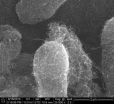(Press-News.org) While more Americans are working past age 65 by choice, a growing segment of the population must continue to work well into their sixties out of financial necessity. Research conducted by the Columbia University's Mailman School of Public Health and the University of Miami Miller School of Medicine looked at aging, social class and labor force participation rates to illustrate the challenges that lower income workers face in the global marketplace. The study used the burden of arthritis to examine these connections because 49 million U.S. adults have arthritis, and 21 million suffer activity limitations as a result. The condition is also relatively disabling and painful but not fatal. The researchers found that blue collar workers are much more likely to work past 65 than white collar workers and are much more likely to suffer from conditions like arthritis, reducing their quality of life and work productivity.
The study findings are reported online in the American Journal of Public Health.
The investigators calculated estimates and compared age-and occupational specific data for workers with and without arthritis, merging data from the U.S. National Health Interview Survey (NHIS), Medical Expenditure Panel Survey (MEPS) and National Death Index. They studied 17,967 individuals for the analysis out of 38,473 MEPS participants.
"Arthritis serves as a powerful lens for looking at these convergent phenomena," said Alberto J. Caban-Martinez, DO, PhD, MPH, Department of Epidemiology and Public Health at the University of Miami Miller School of Medicine and first author. "We found that blue-collar workers with arthritis are in much worse health than are all other workers, suggesting that they are struggling to stay in the workforce despite their health condition."
At all ages, blue-collar workers in the workforce are in worse health than white-collar workers. By age 65, 19% of white-collar workers with arthritis remain in the workforce compared with 22% of blue-collar workers. But employed blue-collar workers have more severe disease than employed white-collar workers, and look forward to fewer years of healthy life -- approximately 11 for blue-collar workers and 14 for white-collar workers.
The investigators reported that lower-income workers of older age in the service and farming sectors–– two job types that are unlikely to come with pension plans––are more likely to have arthritis than not, with 58% of service workers and 67% of farm workers continuing to work despite struggling with the painful health condition. Sixteen percent of all blue collar workers are over 65 and 47% report they have arthritis. By contrast, 14% of white collar workers work beyond the age of 65, and 51% of these workers reporting arthritis. Overall, approximately 15% of all workers remain in the workforce at or past retirement age, and 44% have arthritis.
"The increasing age of the U.S. workforce presents new challenges for government, employers and working families," observes Peter Muennig, MD, MPH, associate professor of Health Policy and Management and senior author. "It is estimated that by the year 2030 approximately 67 million adults aged 18 years and older will have arthritis. Because the 'graying' workforce will be disproportionately represented by people from middle and lower occupational classes that also suffer from a higher prevalence of arthritis and a shorter life expectancy than wealthier Americans, Dr. Muennig points out that additional enhancements to federal programs such as better disability, health and unemployment insurance will be needed to maintain a higher quality of life for all workers, particularly for those with chronic conditions such as arthritis. "As the population ages in the face of expanding budget deficits, we face politically difficult choices if the U.S. is to prevent significant declines in its standard of living."
###
This study was funded by in part the National Institute of Arthritis and Musculoskeletal and Skin Diseases and the National Institute for Occupational Safety and Health.
About Columbia University's Mailman School of Public Health
Founded in 1922 as one of the first three public health academies in the nation, Columbia University's Mailman School of Public Health pursues an agenda of research, education, and service to address the critical and complex public health issues affecting New Yorkers, the nation and the world. The Mailman School is the third largest recipient of NIH grants among schools of public health. Its over 300 multi-disciplinary faculty members work in more than 100 countries around the world, addressing such issues as preventing infectious and chronic diseases, environmental health, maternal and child health, health policy, climate change & health, and public health preparedness. It is a leader in public health education with over 1,000 graduate students from more than 40 nations pursuing a variety of master's and doctoral degree programs. The Mailman School is also home to numerous world-renowned research centers including the International Center for AIDS Care and Treatment Programs (ICAP), the National Center for Disaster Preparedness, and the Center for Infection and Immunity. For more information, please visit www.mailman.columbia.edu
The University of Miami Leonard M. Miller School of Medicine, founded in 1952, was the first medical school in the state of Florida. The Miller School of Medicine is located on the 100-acre University of Miami/Jackson Memorial Medical Center complex in Miami. The medical center includes three University-owned hospitals that make up the University of Miami Health System (UHealth): University of Miami Hospital, Sylvester Comprehensive Cancer Center and Bascom Palmer Eye Institute. Our three primary affiliated hospitals on the campus include Jackson Memorial Hospital, Holtz Children's Hospital and the Miami VA Medical Center. Miller School faculty members conduct more than 1,700 research projects in basic science and clinical care.
Blue collar workers work longer and in worse health than their white collar bosses
2011-07-22
ELSE PRESS RELEASES FROM THIS DATE:
Chronic pain in homeless people not managed well: Study
2011-07-22
TORONTO, Ont., July 21, 2011—Chronic pain is not managed well in the general population and it's an even greater challenge for homeless people, according to new research by St. Michael's Hospital.
Twenty-five per cent of Canadians say they have continuous or intermittent chronic pain lasting six months or more. The number is likely to be even higher among homeless people, in part due to frequent injuries.
Of the 152 residents of homeless shelters with chronic pain studied by Dr. Stephen Hwang, more than one-third (37 per cent) had Chronic Pain Grade IV, the highest ...
Nanotechnology for water filter
2011-07-22
This release is available in German.
Nanotechnology has developed tremendously in the past decade and was able to create many new materials with a vast range of potential applications. Carbon nanotubes are an example of these new materials and consist of cylindrical molecules of carbon with diameters of a few nanometers – one nanometer is one millionth of a millimeter. Carbon nanotubes possess exceptional electronic, mechanical and chemical properties, for example they can be used to clean polluted water. Scientists of the University of Vienna had recently published ...
Fingerprinting fugitive dust
2011-07-22
This release is available in Spanish.
Each community of soil microbes has a unique fingerprint that can potentially be used to track soil back to its source, right down to whether it came from dust from a rural road or from a farm field, according to a U.S. Department of Agriculture (USDA) soil scientist.
Ann Kennedy, at the Agricultural Research Service (ARS) Land Management and Water Conservation Research Unit in Pullman, Wash., studies the biological properties of soils that affect wind erosion. She analyses the soil for the fatty acid or lipid content from the community ...
Study: Subsidizing wages at long-term care facilities would cut turnover
2011-07-22
CHAMPAIGN, Ill. — Subsidizing the wages of caregivers at group homes would likely reduce worker turnover rates and help contain costs at long-term care facilities, according to new University of Illinois research.
Elizabeth T. Powers, a professor of economics and faculty member of the Institute of Government and Public Affairs at Illinois, says that a government-sponsored wage-subsidy program could reduce the churn of low-wage caregivers through group homes by one-third.
"High rates of worker turnover have costs, and there aren't a lot incentives for the agencies that ...
Stronger social safety net leads to decrease in stress, childhood obesity
2011-07-22
CHAMPAIGN, Ill. — Social safety net programs that reduce psychosocial stressors for low-income families also ultimately lead to a reduction in childhood obesity, according to research by a University of Illinois economist who studies the efficacy of food assistance programs on public health.
Craig Gundersen, a professor of agricultural and consumer economics at Illinois, says food and exercise alone are not to blame for the extent of obesity among children in the United States. Psychosocial factors, such as stressors brought about by uncertainty about the economy, income ...
Executive pay reform unlikely to reduce systemic risk in economy
2011-07-22
CHAMPAIGN, Ill. — Reforms aimed at curbing executive compensation will likely have little effect on reducing systemic risk in the financial system, and they may even have unintended consequences for the freedom to contract, according to a University of Illinois expert in business law and corporate finance.
In a paper published in the Ohio State Entrepreneurial Business Law Journal, law professor Christine Hurt argues that giving regulators unprecedented power to prohibit certain types of private compensation under the guise of minimizing systemic risk in the financial ...
Study: Regulatory hurdles hinder biofuels market
2011-07-22
CHAMPAIGN, Ill. — Regulatory hurdles abound for the successful commercialization of emerging liquid biofuels, which hold the promise of enhancing U.S. energy security, reducing greenhouse gas emissions and serving as a driver for rural economic development, according to new U. of I. research.
In the study, University of Illinois law professor Jay P. Kesan and Timothy A. Slating, a regulatory associate with the University of Illinois Energy Biosciences Institute, argue that regulatory innovations are needed to keep pace with technological innovations in the biofuels industry.
"Getting ...
Chance favors the concentration of wealth, U of M study shows
2011-07-22
Most of our society's wealth is invested in businesses or other ventures that may or may not pan out. Thus, chance plays a role in where the wealth of a society will end up.
But does chance favor the concentration of wealth in the hands of a few, or does it tend to level the playing field? Three University of Minnesota researchers have built a simplified model that isolates the effects of chance and found that it consistently pushes wealth into the hands of a few, ever-richer people.
The study, "Entrepreneurs, chance, and the deterministic concentration of wealth," ...
NASA sees Tropical Storms Bret and now Cindy frolic in North Atlantic
2011-07-22
Two tropical storms are now in the open waters of the North Atlantic: Bret and Cindy. Both were captured on one image from NASA today. Both storms are hundreds of miles to the east-northeast of Bermuda and pose no threat to land areas.
NASA's GOES Project issued an infrared image of both Bret and Cindy today from the GOES-13 satellite, which is operated by NOAA. The NASA GOES Project is housed at NASA's Goddard Space Flight Center in Greenbelt, Md. and uses GOES-13 data from NOAA to create images and animations. The image was captured at 0845 UTC (4:45 a.m. EDT) and shows ...
MIT: Inside the innards of a nuclear reactor
2011-07-22
CAMBRIDGE, Mass. -- As workers continue to grapple with the damaged Fukushima Daiichi nuclear powerplant in Japan, the crisis has shone a spotlight on nuclear reactors around the world. In June, The Associated Press released results from a yearlong investigation, revealing evidence of "unrelenting wear" in many of the oldest-running facilities in the United States.
That study found that three-quarters of the country's nuclear reactor sites have leaked radioactive tritium from buried piping that transports water to cool reactor vessels, often contaminating groundwater. ...





